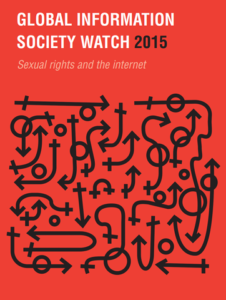
GISWatch 2015 - Porn. Panic. Ban.

#PornBan. It’s like a rash, this impulse to ban porn all over the world – despite protests that are going viral. The Twitter hashtag #pornban sprung up in July 2015 as the Indian government blocked 857 porn sites, 1 and then backtracked a bit, 2 asking internet service providers (ISPs) to unblock those that don’t contain child pornography. Which makes service providers the arbiters of our constitutionally guaranteed right to freedom of expression, deciding what we may or may not see. Seriously?
The United Kingdom recently banned a number of sex acts online, 3 including female ejaculation, even while there were almost 250,000 hits on porn sites from IP addresses in the buildings housing parliament. 4 The UK government is now asking porn sites to collect proof 5 that their visitors are adults. Will this data be stored privately and not used for other purposes? A valid question in an age of mass surveillance, hacks on “cheating” sites 6 and hacker releases of private information, including sexual preferences. 7
Iceland 8 has been threatening to ban “violent” online porn since 2013. Indonesia 9 and Turkey 10 have blocked lesbian, gay, bisexual, transgender, intersex and queer (LGBTIQ) content in the name of banning porn. The Philippines 11 has outlawed cybersex and cam girls, while a religious lobby in Australia 12 is pushing for anti-piracy laws to be extended to porn. Porn possession is illegal in Botswana, 13 Egypt 14 and Uganda. 15 And even as the Israel-Palestine conflict escalated in 2012, Hamas managed to ban “full” internet porn in the Gaza Strip. 16 Whatever that means.
Porn. Panic. Ban. That’s pretty much the policy response in many parts of the world.
You can read and download GISWatch 2015 - Porn. Panic. Ban. thematic report here
